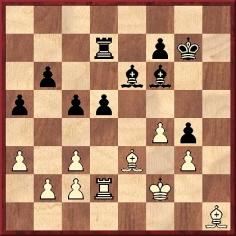
When contacting us by e-mail, correspondents are asked to include their name and full postal address and, when providing information, to quote exact book and magazine sources. The word ‘chess’ needs to appear in the subject-line or in the message itself.
| First column | << previous | Archives [45] | next >> | Current column |
Charles Sullivan (Davis, CA, USA) refers to Tarrasch v Alekhine, Hastings, 18 September 1922. Alekhine annotated the game on pages 45-47 of his tournament book (published in London in 1924); in the Dover reprint (New York, 1968) the page numbers are 41-43. See also pages 172-173 of the Skinner/Verhoeven volume on Alekhine.
Our correspondent asks whether the game-score in these sources is faulty, given that Alekhine would have been unlikely to miss the opportunity in the position below (after 34 Bxh1) to win the white bishop with 34...d4.

We suspect (but cannot prove) that there is indeed an error in the game-score. When moves 1-37 were published on pages 36-37 of the November 1922 Chess Amateur Black’s 32nd move was given as ...Re8 and not ...Rd7. In that case, the position after 33 Rh1 Rxh1 34 Bxh1 would not give the possibility of winning the bishop. An alternative explanation is that at move 32 Alekhine played ...Rd6. That is the move given on page 378 of Alexander Alekhine I Games 1902-1922 (Sofia, 2002).
From Mark McCullagh (Belfast, Northern Ireland):
‘Which game is the first recorded loss by a FIDE-titled player to a computer at any time control?’
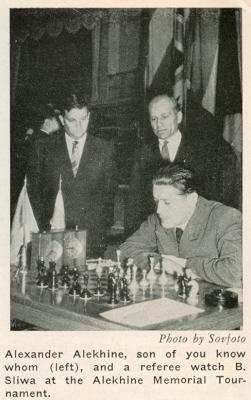
Source: Chess Review, January 1957, page 6.
Jud McCranie (Brunswick, GA, USA) asks who coined the remark ‘All rook endgames are drawn’. He has seen it attributed to both Tarrasch and Tartakower, but can a specific source be found?
At present we cannot resolve the matter. On pages 125-148 of his book on the 1908 world championship match Tarrasch wrote a treatise ‘Neue Untersuchungen über Turmendspiele’ which concluded with a remark that was only slightly similar:
‘Um ganz kurz zu resümieren, so scheint es, daß diese Endspiele in der Regel remis zu halten sind.’
The translation on page 487 of the November 1909 BCM was:
‘It appears that generally these endgames may be drawn.’
Naturally, Tarrasch was referring only to the type of rook endgames discussed in his treatise.

Siegbert Tarrasch
‘Up to this point White has been following well-known analysis but now he makes a fatal error – he begins to use his own head.’
This remark was merely labelled as ‘Tarrasch, on a game in a world championship match’ when given on page 52 of The Chess Scene by David Levy and Stewart Reuben (London, 1974). Is any further information available?
Wojtek Bartelski (Warsaw) asks for information about an event listed as follows on page 189 of Chess Results, 1921-1930 by Gino Di Felice (Jefferson, 2006):
‘BERLIN (GER), 1927 – Team Tourney
1. USSR pts. 27.5
2. Austria 21.5
3. Hungary 21
4. Denmark 16.5
5. Germany 13.5 .’
The book provides no specific source, but we can offer a report on page 137 of the May 1927 Deutsche Schachzeitung:
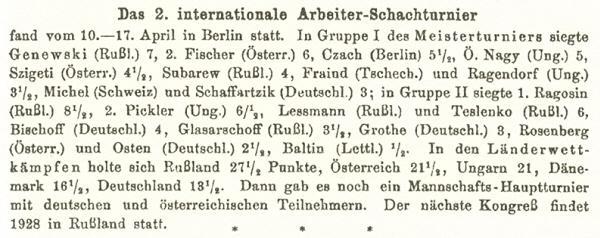
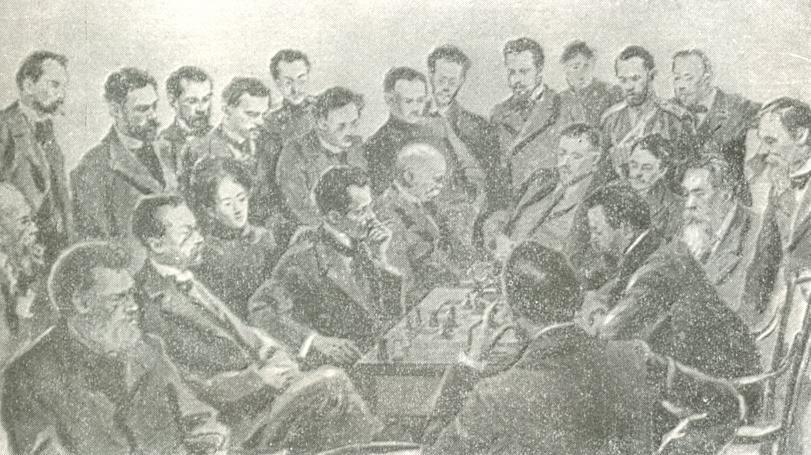
Can any reader supply a better version of this illustration of Janowsky and Chigorin in play at St Petersburg, 1900?
It appeared opposite page 129 of M. Yudovich’s monograph Михаил
Чигорин (Moscow, 1985). Two games between Janowsky and Chigorin
played in St Petersburg in December 1900 were published in the
15 January 1901 issue of La Stratégie (pages 4-5 and
9-10). Chigorin won both, and the conclusion of the latter game
was given in C.N. 2499 (see pages 47-48 of A Chess Omnibus).
Michael Clapham (Ipswich, England) writes:
‘The term “j’adoube” is included in Philidor’s Analysis of the Game of Chess (London, 1790). See pages 127 and 128 of Volume II in the Rules, which, according to Philidor, “the Society or Club of Chess in England have adopted for their code”.’

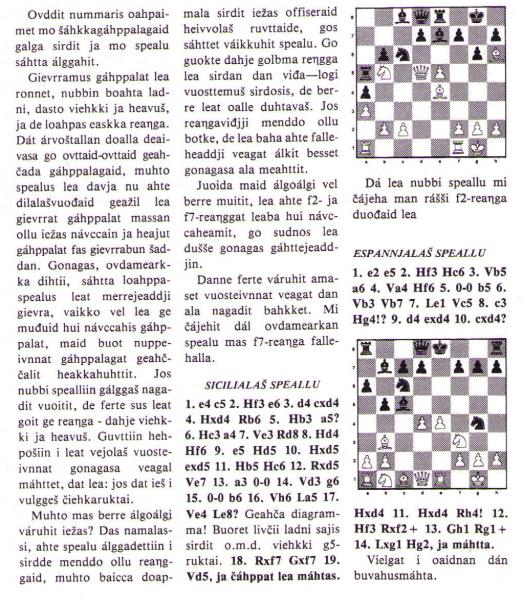
Below is a list of the books about (not by) Korchnoi in our collection:
Yakov Zusmanovich (Pleasanton, CA, USA) adds a further volume: Korchnoi: Skakkens Springer by S. Novrup (Copenhagen, 1978). He has also indicated some additions to our list of books about Karpov (C.N. 5489), and we plan to incorporate them shortly into a feature article covering both masters.

In 1978 a dispute arose over Viktor Korchnoi’s Best Games, published that year by the Philidor Press Ltd., London. In a letter dated 16 February 1978 Korchnoi informed both CHESS and the BCM that the only two books he had authorized in English were the Batsford publications Chess is my Life and The King’s Gambit. He added:
‘The Collection of Games of which I appear to be “author” is a reprint of previously annotated games published without my permission. This book is particularly damaging to me as I have in preparation a genuine collection of my best games ...’
In both magazines the Directors of the Philidor Press Ltd., David Levy and Kevin O’Connell, disputed Korchnoi’s assertions. For the various exchanges, see CHESS, March 1978 (page 165) and June 1978 (page 287) and the BCM, June 1978 (page 246) and September 1978 (page 397). No further published references to the controversy come to mind, but in the circumstances we find it rather strange to possess a copy of the book inscribed by Korchnoi:
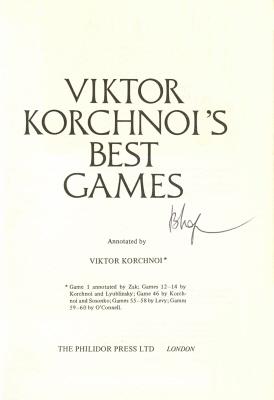
Requested: authoritative information regarding Howard Staunton’s standing as a Shakespearean scholar, both during his lifetime and since.
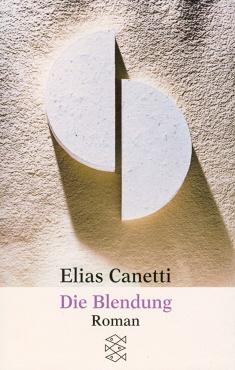
The chessplaying Fischerle/Fischer coincidence in Elias Canetti’s 1935 novel Die Blendung (published in English in the 1940s under the titles Auto-da-Fé and The Tower of Babel) is too well known to be discussed here, but when and by whom was the coincidence first pointed out, and did Canetti ever comment on it?
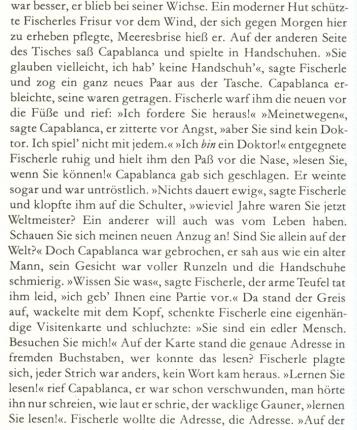
Above is an excerpt from page 380 of the 2005 Fischer Taschenbuch Verlag edition, while the passage below comes from page 200 of Auto-da-Fé:

Larry Crawford (Milford, CT, USA) draws attention to a webpage presenting the chess set of Robert E. Lee.
C.N. 3043 (see page 101 of Chess Facts and Fables) mentioned that in his 1970s television series America (the episode entitled ‘A Firebell in the Night’) Alistair Cooke visited the Curtis-Lee Mansion, Arlington and showed the travel set.
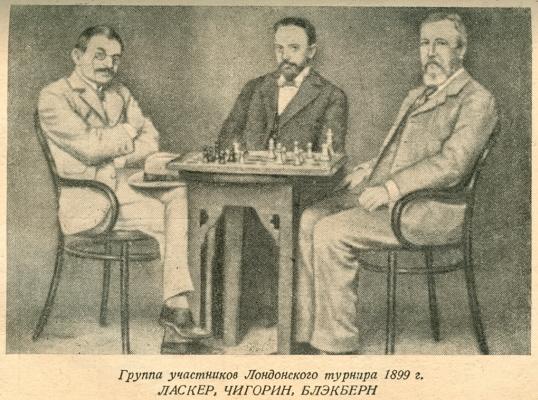
This picture comes from page 113 of N.I. Grekov’s 1952 monograph in Russian on Chigorin. Does any reader have a copy of better quality?
Ernst Klein – Olaf Barda
Radio game (BBC-NRK), 1952
King’s Fianchetto Opening
1 g3 d5 2 Bg2 Nf6 3 f4 c5 4 Nf3 Nc6 5 c3 e6 6 d3 Qc7 7 O-O Be7 8 e4 dxe4 9 dxe4 Nxe4 10 Ne5 Nd6 11 Nxc6 bxc6 12 Qa4 O-O 13 Be3 Rb8 14 b3 Nb5 15 Rc1 Rd8 16 Qe4 Rd5 17 Qc2 Bb7 18 Qf2 Nd6 19 g4 f5 20 c4 Rd3 21 g5 Rd8 22 Nc3 Bc8 23 Na4 Ne4 24 Bxe4 fxe4 25 Nb2 R3d4 26 Re1 Rf8 27 Bxd4 Rxf4
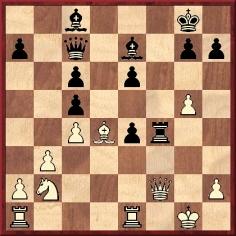
28 Rxe4 Rxe4 29 Rf1 Bd6 30 Be3 Bxh2+ 31 Kg2 Bd6 32 Qf3 Rh4 33 Rh1 Rxh1 34 Kxh1 Qf7 35 Kg2 Bd7 36 Qd1 Qe7 37 Qf3 e5 38 Qe4 Qe6. At this point White withdrew.
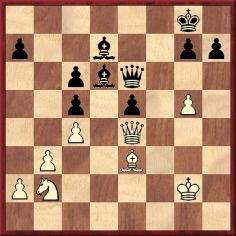
‘One of the finest games of chess ever played’ was the description on page 155 of the July 1952 Chess World. The same page had derision for Klein’s suggestion that in the final position he had a won game.
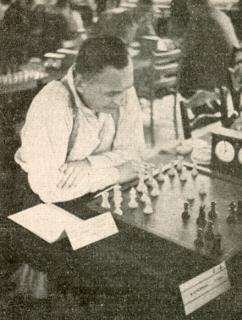
Ernst Klein
Coverage of the game and of Klein’s controversial withdrawal was published in three issues of CHESS: July 1952, page 191 (report); August 1952, pages 218-219 (letter from Klein) and 222-223 (annotations by Barda); September 1952, page 237 (letter from Klein).
A number of readers correctly identified the language in which the passage, by Rolf A. Olsen, appeared: Northern Sami. Published on page 39 of the March 1980 issue of the Norwegian magazine Nord-Norsk Sjakk, the item is available on-line and was drawn to our attention by Calle Erlandsson (Lund, Sweden).
Martin van Essen (Enschede, the Netherlands) offers a third specimen of the anti-Turton theme in over-the-board play: Black’s 15th move in the game between Yosef Porath and Bent Larsen at the 1956 Olympiad in Moscow.
1 Nf3 f5 2 c4 Nf6 3 Nc3 g6 4 b3 Bg7 5 Bb2 d6 6 d4 c6 7 e3 Qa5 8 a3 O-O 9 Be2 e5 10 b4 Qc7 11 d5 h6 12 c5 e4 13 Nd4 dxc5 14 Qb3 cxd4 15 d6+
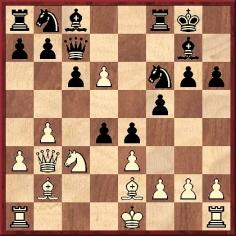
15...Be6 16 Qxe6+ Qf7 17 Qxf7+ Rxf7 18 exd4 Rd7 19 d5 Nxd5 20 Bc4 Kh7 21 Bxd5 Bxc3+ 22 Bxc3 cxd5 23 g4 Rxd6 24 gxf5 gxf5 25 Rd1 Nc6 26 b5 Nd8 27 f3 Ne6 28 fxe4 fxe4 29 Rf1 Ng5 30 Rf5 d4 31 h4 Nf3+ 32 Ke2 Rc8 33 Bb4 Rg6 34 White resigns.
The game has been published on, for instance, page 167 of Olimpiady Szachowe 1924-1970 by S. Gawlikowski (Warsaw, 1972).
It is a different illustration of the anti-Turton theme from the pair given in C.N. 5350. The only alternative to 15...Be6 is 15...Qf7, after which 16 Bc4 wins. The effect of that bishop move is thus nullified by drawing the queen beyond the critical square c4.
Michael McDowell (Westcliff-on-sea, England) is reminded of the following composition by E.E. Zepler in the Deutsches Wochenschach, 1923:
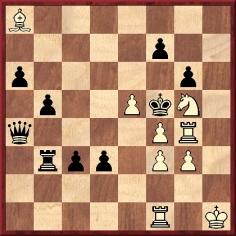
Mate in five.
Mr McDowell comments:
‘If White tries 1 Rh4, threatening 2 Be4+ Qxe4 3 fxe4 mate, Black has the defence 1...Rb4 2 Be4+ Rxe4 3 fxe4+ Qxe4+, preventing 4 g4 mate. White therefore opens with 1 Bb7, forcing 1...Qc4, and now the main plan works: 2 Rh4 Rb4 3 Be4+ Qxe4 4 fxe4+ Rxe4 5 g4.’
From page 105 of the Chess Player’s Chronicle, 1841 (an answer by Staunton to a correspondent):
‘“XYZ, BRAINTREE”: We reply to every communication that reaches us: our correspondent’s letter was not received.’
From page 117 of Chess is my Life by Victor Korchnoi (Zurich, 2005):
‘It does not seem possible, but one thing that I don’t have is a photo of myself with Bobby Fischer. Nevertheless, between 1960 and 1970 we contested eight games, in which we each scored two wins.’
In the meantime Korchnoi has doubtless noted the photograph taken at Curaçao, 1962 which is available on-line in a ChessBase article and appears on page 73 of Curaçao 1962 by Jan Timman (Alkmaar, 2005). That richly-illustrated book also has, on page 33, a group photograph in which Fischer is standing behind Korchnoi.
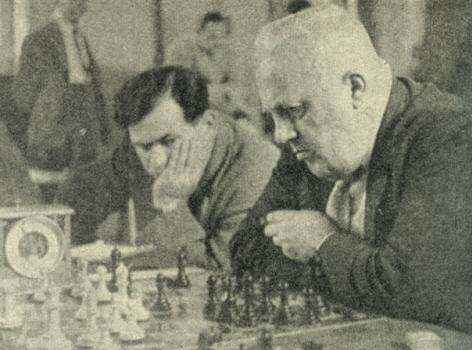
Efim Bogoljubow
After Bogoljubow’s death a tribute by E.J. Diemer was published on page 221 of the August 1952 CHESS. Below is an extract:
‘The last time I saw him was in Freiburg, ten days before his death. On 6 June he won a lightning-chess tournament organized among the members of the Freiburg team, for whom he had played at top board since 1950. The next day, he helped Freiburg beat another local team by 8:0 and the same evening he beat the well-known Berlin master Mross (in the last tournament game of his life) to help Freiburg register a 4½-3½ win against a team (Berlin-Eckbauer) which had successfully defeated Luxembourg, Cologne, Basle and Lucerne.
I had a conversation with him then of rare seriousness. As if conscious of the nearness of his end, he spoke, on this last occasion, about – Chess Immortality. I discovered at this late hour in his life, and I pass it on as his closing thought, that Bogoljubow wanted his chess to be regarded as an art and himself as an artist. He feared, he said, that not one of his games, even from the great tournament at Moscow in 1925, the zenith of his career, would be deemed worthy of inscription in the scrolls of immortality. So high did he set his ideals. And so sceptically did he look back over his 40 years of masterly endeavour. Luckily the chess world will not share his pessimism. Countless masterpieces of play remain to assure him the immortality he sought.’
Three correspondents offer information about Howard Staunton’s standing as a Shakespearean scholar.
Hassan Roger Sadeghi (Lausanne, Switzerland) draws attention to the Shakespeare’s Editors webpage on Staunton, which quotes from the entry on the latter in the 1909 edition of the Dictionary of National Biography.
Robert John McCrary (Columbia, SC, USA) refers to the 1979 edition of Staunton’s work published by Park Lane, New York (the dust-jacket of the book is reproduced in our Chess and Shakespeare feature article):
‘The Foreword, by Solomon J. Schepps, comments on page xiv that Staunton:
“... was one of the great Shakespearean scholars of his age. His knowledge of the texts themselves and of Elizabethan language and customs was enormous. And, equally to his credit, he understood the importance of including extra material in this edition.”
However, in the 1969 Pelican Shakespeare I can find no mention of Staunton, although other nineteenth-century volumes by other editors are cited.’
From William D. Rubinstein (Aberystwyth, Wales):
‘Staunton’s name can be found in modern reference books on Shakespeare, but only briefly and not invariably. For instance, he does not appear at all in Shakespeare’s Lives by S. Schoenbaum, the standard work on how Shakespeare has been discussed and examined since his death. Staunton’s views on the meaning of a word in Shakespeare are occasionally cited in recent editions of the plays, such as the Arden and Oxford publications, but, again, not often.’
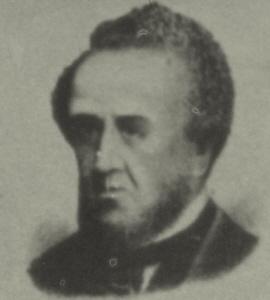
Howard Staunton
Finally for now, we add a brief item from page 81 of the February 1888 BCM:
‘In the course of a speech which Mr Routledge, the eminent publisher, made lately at a complimentary dinner, he paid a high tribute to the literary abilities of the late Howard Staunton, and stated that his firm had paid that gentleman £1,000 for editing his edition of Shakespeare. The work was a labour of love on the part of the great chessplayer, but nevertheless the payment would be welcome.’
Regarding pages 111-112 of Tarrasch’s book on his 1908 world championship match, Der Schachwettkampf Lasker-Tarrasch (Leipzig, 1908), Scott Thomson (New York) writes:
‘Tarrasch states that he planned to play a training match with a chess master, but that at the last moment the master failed to show up, thus depriving Tarrasch of needed practice and contributing to his very poor start to the match. Tarrasch is quite bitter about what he sees as a betrayal. Do you know the identity of this master?’
This matter was touched on by Emanuel Lasker in the New York Evening Post of 24 October 1908:
‘First, Tarrasch wrote that Düsseldorf has an ocean climate, that the sea winds upset him; then, that at the commencement of the match, he had not had his full force, because both Schlechter and Rubinstein failed, as they had promised, to practise with him; then, that I was lucky.’
See C.N. 1688 (on pages 188-189 of Chess Explorations), as well as page 325 of Siegbert Tarrasch Leben und Werk by Wolfgang Kamm (Unterhaching, 2004).
The photograph below is the frontispiece to The Championship Match: Lasker v Tarrasch by L. Hoffer (London, 1908):
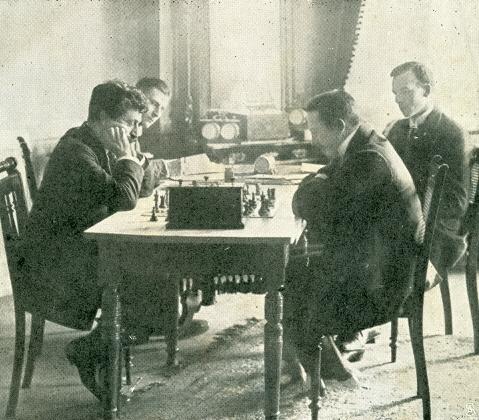
Emanuel Lasker and Siegbert Tarrasch
An addition to Disappeared, our feature article on David A. Mitchell, concerns his very scarce booklet Fable of the Discontented Chessmen (Philadelphia, 1918). Since it comprises only six pages of text, we reproduce them all:
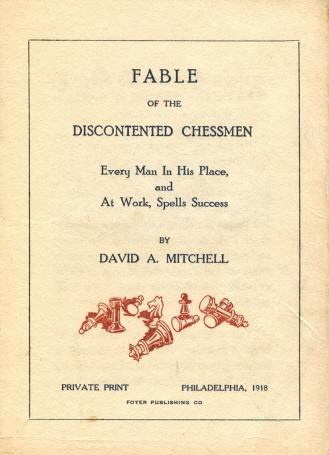
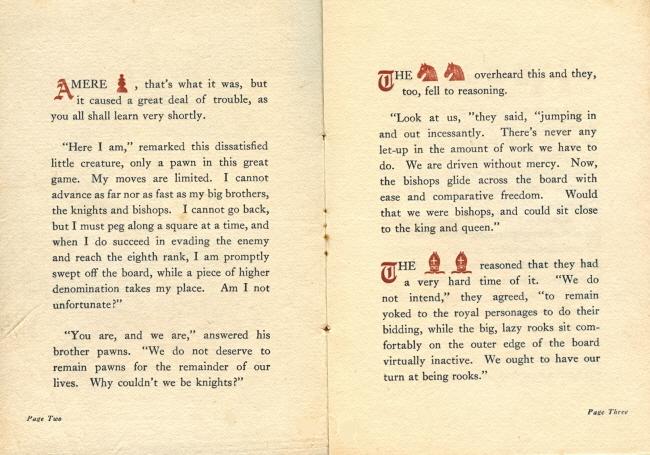
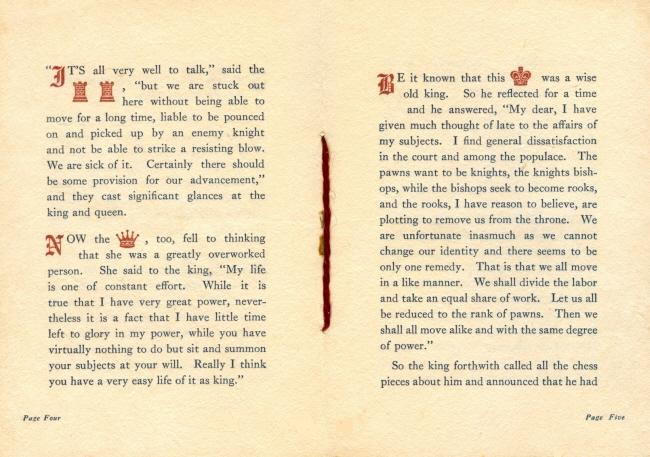
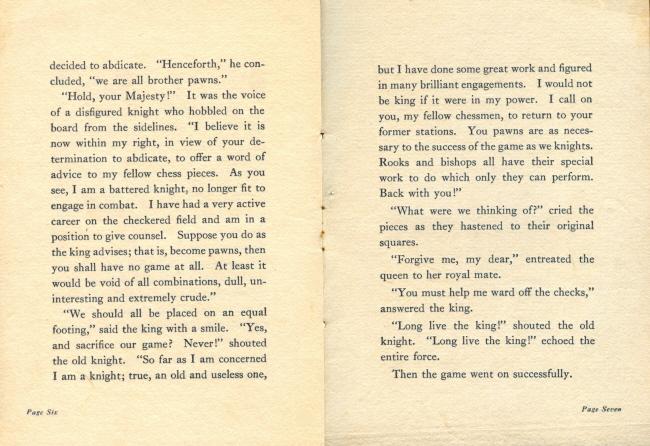
As reported on page 331 of Kings, Commoners and Knaves, it was claimed on page 100 of The Sorcerer’s Apprentice by D. Bronstein and T. Fürstenberg (London, 1995) that during the Second World War Tartakower was several times ‘dropped by parachute behind enemy lines on secret missions’.
No evidence for the assertion has ever been traced, and now we note the following passage on page 278 of Moral Victories by David Lovejoy (Mullumbimby, 2008):
‘Bronstein subsequently told me that his source was a French journalist who talked to him many years earlier. Bronstein was inclined to doubt the story, but his editor insisted on including it for colour. (Telephone conversation with Bronstein, March 2006.)’
This appears in the book’s factual End Notes. Subtitled, ‘The Story of Savielly Tartakower’, Moral Victories is an historical novel (a 285-page paperback), and we shall be pleased to forward to Mr Lovejoy any messages from readers who are interested in ordering a copy.
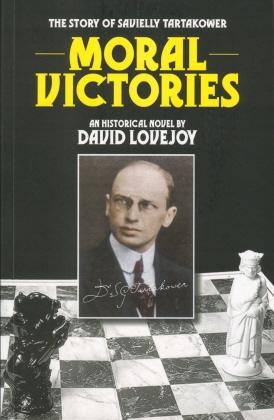
Fred Shapiro (New Haven, CT, USA), the editor of The Yale Book of Quotations, notifies us that for the book’s next edition he would welcome suggestions for the ten most famous chess quotations of all time.
Readers’ contributions will be appreciated. The only condition, of course, is that a rock-solid source must be available in each case. As indicated in C.N. 3514, there can be no interest in unreferenced ‘chess quotes’ of the kind cushily listed by so many publications and websites.
Regarding Henry Brouncker, Terry Bazes (Pleasantville, NY, USA) draws attention to the following passage:
‘Brounker, whose name is handed down to us as the most famous chessplayer of his time, filled in the household of the duke the same honourable office which Tom Chiffinch held in that of the King ...’
Source: page 149 of Memoirs of the Beauties of the Court of King Charles the Second by Mrs Jameson (London, 1838).
We add that the same passage had appeared on page 120 of the same author’s book The Beauties of the Court of Charles the Second (Philadelphia, 1834):
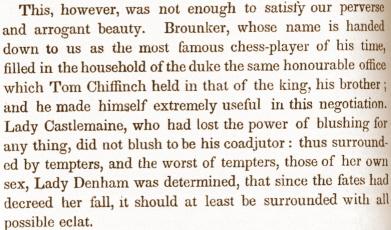
Jeremy Gaige (Philadelphia, PA, USA) informs us that he is seeking the contact details of collectors who are interested in acquiring the archives which he has built up over the past 40 years. We shall gladly forward to Mr Gaige any enquiries from prospective purchasers, whether individual or corporate, of his unique collection of material.
Pierre Bourget (Quebec, Canada) asks for a source for this well-known game:
B. Molinari – Luis Roux Cabral
Uruguay, 1943
Queen’s Gambit Declined
1 d4 Nf6 2 Nf3 d5 3 c4 c6 4 Nc3 Nbd7 5 e3 e6 6 Bd3 dxc4 7 Bxc4 b5 8 Bd3 a6 9 O-O c5 10 b3 Bb7 11 Qe2 Qb6 12 Rd1 Be7 13 a4 b4 14 Nb1 Rc8 15 Nbd2 cxd4 16 Nc4 Qa7 17 Nxd4 O-O 18 Bd2 a5 19 Nb5 Qa8 20 Nbd6 Bxg2 21 Nxc8 Rxc8 22 Re1 Bf3 23 Qf1 Qd5 24 e4
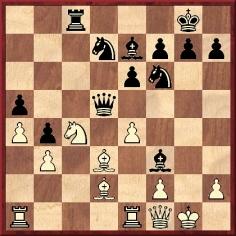
24...Rxc4 25 bxc4 Qh5 26 Bf4 Ng4 27 Be2 Nde5 28 h3 Bc5 29 Bg3 Nxf2 30 Bxf2 Qg5+ 31 Kh2 Qf4+ 32 Bg3 Bg1+ 33 Qxg1 Ng4+ 34 White resigns.
We note that Fred Reinfeld annotated the game on pages 11-12 of the Chess Correspondent, May-June 1944, the occasion being specified as the previous year’s Uruguayan championship. His closing remark was: ‘A game destined for immortality.’
Reinfeld’s notes were reproduced, in abridged form, on page 213
of the September 1944 BCM, and on page 267 of the November
1944 issue T.H. Tylor mildly disagreed with one of them. Both
magazines stated that White resigned after 32...Bg1+.
Mr Bourget also provides a photograph of Alekhine published on page 6 of issue one of FIDE Revue, 1956:
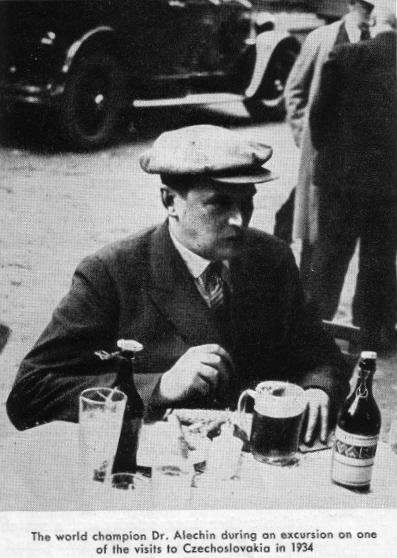
A familiar chess quotation mentioned to us by Dominique Thimognier (St Cyr sur Loire, France) is ‘Viele sind Schachmeister geworden, keiner jedoch Meister des Schachs’, as given on various webpages with Tarrasch’s name attached but no other details. Our correspondent points out, however, that the following appeared on the front cover of the January-February 1933 issue of Les Cahiers de l’Echiquier Français, attributed to Alekhine:
‘Il y a beaucoup de maîtres d’échecs, mais aucun maître des échecs.’ [‘There are many chess masters, but no masters of chess.’]
Further information on this remark is sought. We recall that on page 113 of Kings of Chess (London, 1954) William Winter stated that one evening in Prague, during the July 1931 Olympiad, Alekhine commented to him:
‘You call me Grand Master. I am not Grand Master, I am not even master. Chess will always be master of me and of all of us.’
A slightly different wording appeared in William Winter’s posthumous memoirs on pages 129-130 of CHESS, 9 February 1963:
‘You call me grand master. I am not. I am not even master. Chess itself will always be the master of me, of Capablanca, and all of us.’
In C.N. 5496 a correspondent asked which was the first recorded loss by a FIDE-titled player to a computer at any time control. From Owen J. Clarkin (Ottawa, Canada):
‘Page 60 of More Chess and Computers by D. Levy and M. Newborn (Potomac, 1980) states that the program Chess 4.6 defeated Hans Berliner, Lawrence Day, Robert Hübner, David Levy, Michael Stean and Zvonko Vranešić in blitz games in 1977. The earliest game-score given is a March 1977 victory over Berliner.’
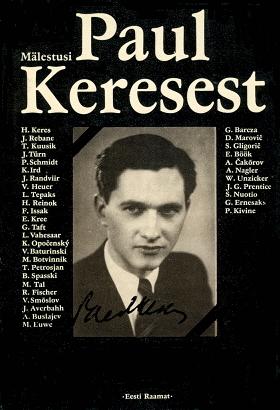
Below are the books about Paul Keres in our collection:

Calle Erlandsson (Lund, Sweden) notes that the Molinari v Roux Cabral game was published on pages 179-180 of the Argentinian magazine Caissa, November 1943:
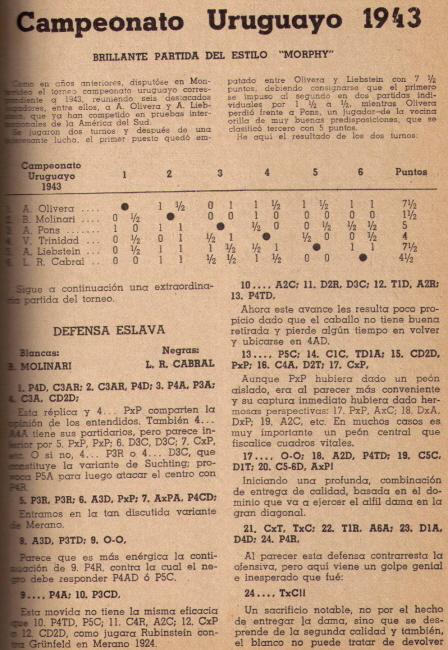

It may be seen that the game is said to have ended with 32...Bg1+ and that the venue was Montevideo.
Javier Asturiano Molina (Murcia, Spain) draws attention to the front cover of Jaque y ... mate! (Montevideo, 1976), a collection of mystery stories selected by Alfred Hitchcock:
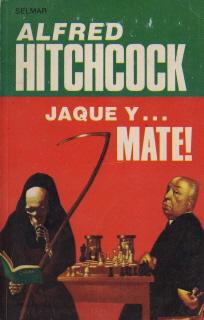
The English edition was entitled Death-Mate (New York, 1973):
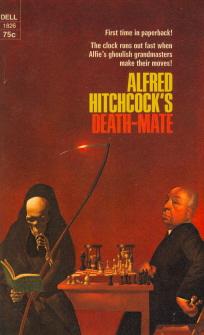
As a companion item to C.N. 5508 (Robert E. Lee’s chess set) Larry Crawford (Milford, CT, USA) points out a webpage which shows the chess set of George B. McClellan.
From Ola Winfridsson (Cambridge, England):
‘To judge from the photograph of Lasker and Tarrasch in C.N. 5517, the players are not keeping score of the game. Instead, that seems to be the task of the two men in the background. When did it become customary for the players themselves to keep score of the game? Was there a difference between tournaments and matches?
Moreover, when did it become customary to analyse adjourned positions? Was it ever strictly forbidden in the laws of chess or was there just a gentleman’s agreement that it was not the done thing to analyse adjourned positions? If it was explicitly forbidden, are there any examples of games being forfeited in this manner?’
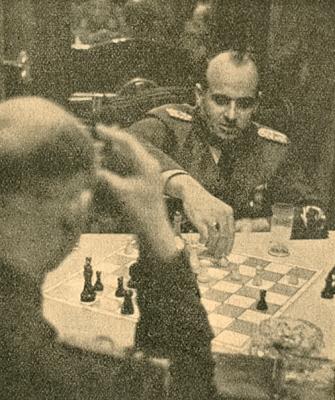
Hans Frank, Deutsche Schachblätter, 1 May 1940, page 68
C.N. 3562 noted that from 1939 to 1945 Hans Frank kept a diary, and we asked whether any references existed to Alekhine, Bogoljubow or, more generally, chess under the Nazi regime. That question has yet to be answered, but here we add that the diaries are mentioned on page 214 of Nuremberg. Evil on Trial by James Owen (London, 2006 and 2007), in a quotation from the trial transcript of 18 April 1946. Frank stated:
‘I bear the responsibility [for the events in Poland after 1939]; and when, on 30 April 1945, Adolf Hitler ended his life, I resolved to reveal that responsibility of mine to the world as clearly as possible.
I did not destroy the 43 volumes of my diary, which report on all these events and the share I had in them; but of my own accord I handed them voluntarily to the officers of the American Army who arrested me.’
We have drawn together a number of C.N. items in a feature article Hans Frank and Chess.
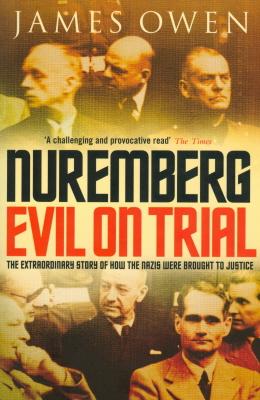
The Preface to James Owen’s book begins, on page 1, with some admirable general comments:
‘History is the prelude to myth. When what actually happened, in all its unsimplified and usually unsensational truth, is forgotten, we create legends for ourselves. Frequently this is because the facts are not exciting enough, or not properly understood, or because they are uncomfortable to live with. ...
... if history has a value it is in reminding us that the past ought not be backlit and airbrushed for ease of mass consumption. That, as the Nazis knew, is not history but propaganda.’
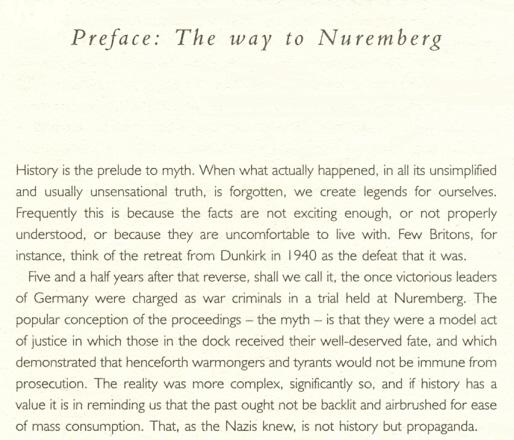
Wanted: the earliest known appearance of the famous quote ascribed to Bobby Fischer, ‘All I want to do, ever, is play chess’.

Bobby Fischer and Mikhail Tal
(from page 41 of XIV. Schach-Olympiade Leipzig 1960)

This is the Swiss organizer and composer Alois Nagler (1907-96), the photograph being culled from his book Schweizer Problemkomponisten (Triengen, 1951). The problem below, from the Basler Nachrichten, 1932, was on page 78:
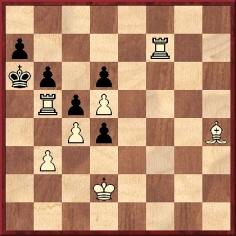
Mate in four.
Many compositions by Nagler, together with extensive biographical information, are presented in Alois Nagler und das Nagler-Gedenkturnier Zürich 1998 by Alex Crisovan (Zurich, 2007).
From Jud McCranie (Brunswick, GA, USA):
‘Did the Lucena Position appear in Lucena’s 1497 book? I have several good sources saying that it did, but several good sources saying that it did not. Some credit Salvio, 1634.’
We believe that this matter was resolved by John Roycroft in an article on pages 160-161 of the April 1982 BCM. Supported by Ricardo Calvo (‘who has made a special study of Lucena and is familiar with every position of the original’), he stated that the position was not in Lucena’s book and suggested that the attribution was due to an error by Johann Berger on page 273 of Theorie und Praxis der Endspiele (Berlin and Leipzig, 1922):
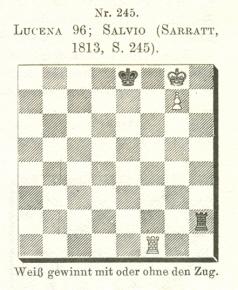
John Roycroft added:
‘In fact the position is indeed to be found in “Salvio”, namely on page 69 of Dr Alessandro Salvio’s Il Puttino, dated 1634. This work is a romance on the chess and non-chess life of Leonardo Giovanni da Cutro, whose rivals included his fellow Italian Paolo Boi and the Spaniard Ruy López. The attribution by Salvio of our position is to “Scipione Genovino”, and the play is given.’
On pages 495-496 of the November 1982 BCM Ricardo Calvo contributed a follow-up item which described Roycroft’s article as ‘very accurate’.
We note that the position as given by Salvio (i.e. the mirror image of what appeared in Berger’s book, with the white rook on c1) was included in an article about him by J.A. Leon on pages 1-8 of the January 1895 BCM.
Martin Weissenberg (Savyon, Israel) reports that page 7 of Povijest hrvatskog šaha 1912-1997 by Vlado Kovačević (Zagreb, 1997) suggests a third (Croatian) spelling: Maksim Romić. The book notes that he was born in the Istrian town of Buzet, which is the Croatian name for Pinguente, but it remains to be discovered whether Maksim Romić or Max Romih was his original name.

This photograph was published on page 39 of the Australasian Chess Review, 28 February 1939. Robert G. Wade (standing on the left) was aged 17.
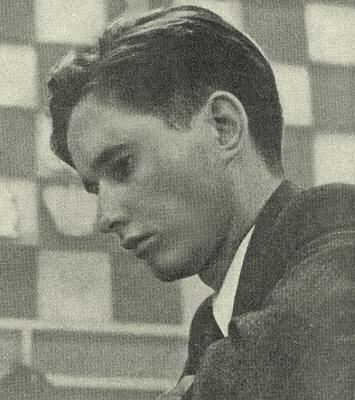
Paul Keres
Yakov Zusmanovich (Pleasanton, CA, USA) offers three additions:
This article by G.H. Diggle originally appeared in Newsflash, February 1986:
‘CHESS (Christmas 1985) reveals that the FIDE General Assembly (Whom God Preserve) has resolved that in big chess events in future every game is to have a first session of six hours (40 moves in the first two hours, then 20 moves in one hour before adjournment). This is no doubt a laudable effort to postpone if not sometimes eliminate that “inevitable hour” at which the game ceases to be one between the two players, and the position spends all night on the operating table being disembowelled by scientific “seconds”, who often pronounce the “patient” dead on the following morning. Whole cemeteries of such games are to be found in modern chess periodicals, with tombstones inscribed:
PASSED PEACEFULLY AWAY
WITHOUT RESUMING PLAY
AGED (invariably) 41 MOVES.But six-hour sessions, it has been objected, may cause our grandmasters such pre-prandial pangs that all can be ruined in the last hour, when half-starved genius only sheds the palest of rays. An examination of the “time” conditions of great matches of the past is therefore of some interest. In the “sandglass” days of Anderssen v Steinitz 1866 it was 20 moves each side in two hours, all games to be played out at one sitting except for a quarter of an hour allowed for “rest and refreshment” after four hours’ play. This meagre interval for rations may have been devised on the principle of keeping the two masters in the same aggressively alert state as Mr Rucastle’s dog in The Adventure of the Copper Beeches – “we only feed him once a day, and not too much then, so he’s always as keen as mustard”. Compared with this, Steinitz v Blackburne 1876 was a bon vivant’s paradise – though the time-limit was 30 moves in the first two hours and one hour for each subsequent 15, the players adjourned for dinner after four hours, resuming afterwards in a state of repletion which in at least one game led to such a “tremendous falling-off in the play” that one unkind critic attributed the cause to “the cuisine, or the wine, or the salmon, or – can you suggest any other obfuscating agency?”
Steinitz v Zukertort 1886 was played with the same time-limit, but matters were simplified in Steinitz v Lasker 1894 and Lasker v Capablanca 1921, the rate being 15 moves an hour throughout with sessions (at least in the latter case) of four hours (9 p.m. to 1 a.m.) to avoid the overpowering “Havana Sun”. Finally, Capablanca v Alekhine 1927 introduced 40 moves in two and a half hours and a first session of five hours. This arrangement has continued to this day, and seems not to have spoilt the games even when the combatants showed disparity in speed. Of particular interest is “H.G.’s” full BCM report of the two great Championship matches in which Botvinnik lost his title to Tal (1960) but recovered it in 1961. A complete record is given of the time taken by both players over every move.
In the first match, the veteran champion, out of practice through temporary non-participation in tournaments, was slower in every one of the 21 games except the last – in the long games often an hour slower, and in the seventh game of 52 moves, which he lost, he was nearly two hours behind. On eight occasions he took 30 minutes or more over one move, his longest times being 42 minutes each (games 9 and 11) – both sealed moves. His young challenger exceeded the half hour only twice, though curiously he devoted 32 minutes to the very last move of the match (his 17th), after which a draw was at once agreed, after one hour 24 minutes of play only. In the return match, however, Botvinnik having recovered his form, the two clocks usually ended up only a few minutes apart – even in the gigantic 121 move draw (game 20) they showed Tal six hours 55 minutes and Botvinnik six hours 41 minutes – a close finish worthy of a University Boat Race.’
This article is to be found on pages 35-36 of volume two of Chess Characters.
Jurgen Stigter (Amsterdam) has found a much earlier occurrence of ‘j’adoube’ in relation to another board game. The following quote comes from page 136 of La maison des ievx academiqves (Paris, 1668), in the section on ‘Le Ieu du Tricque-Trac’:
‘En ce jeu c’est vne maxime tres-inuiolable, & qui deuoit estre aussi des premieres, que Dame touchée, Dame joüée, si l’on ne dit ce mot, i’addoube, horsmis dessous le bois; car si l’on en peut tenir dans ses mains, à plus forte raison y peut-on toucher innocemment, & sans en estre repris, & encourir ny perte ny contrainte de joüer: C’est mon auis que ie soumets à tout autre meilleur en ses raisons, ou en ses regles & pratiques.’
From page 333 of the November 1943 Chess Review (an article on Rubinstein by Reuben Fine):
‘When the famous Swedish Laarobok [sic] was being written right after the last war, the sponsor [sic], Colijn [sic], heard that Rubinstein had a copy of the German Handbuch, with various marginal comments. Colijn [sic] bought the book for a fantastic price, about $1,000, but Rubinstein’s “notes” did not cover two pages when they were put together.’
See also page 81 of Fine’s book The World’s Great Chess Games (New York, 1951). What is the basis for his claim?
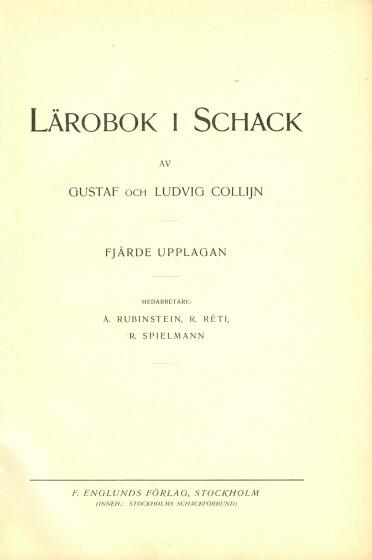
The title page of the fourth (1921) edition
| First column | << previous | Archives [45] | next >> | Current column |
Copyright: Edward Winter. All rights reserved.